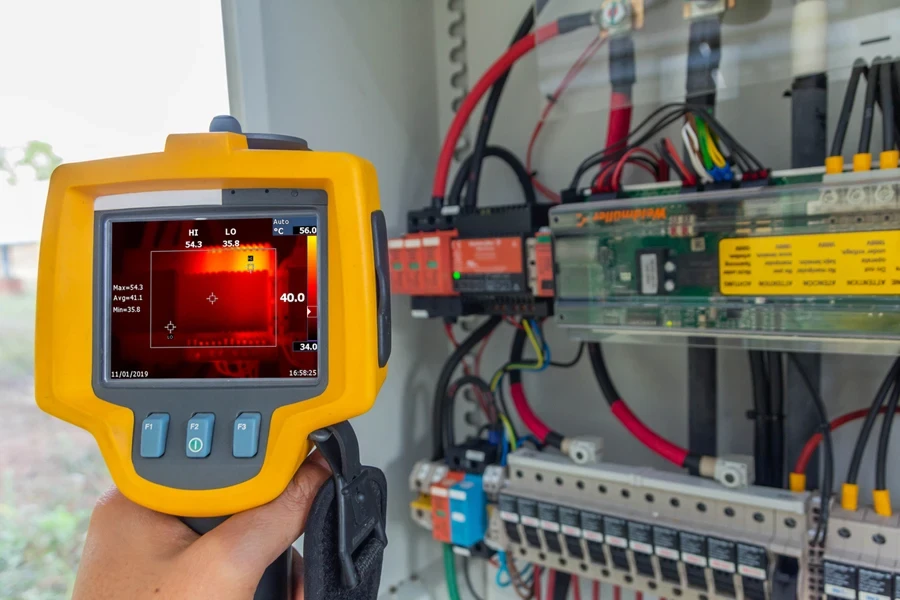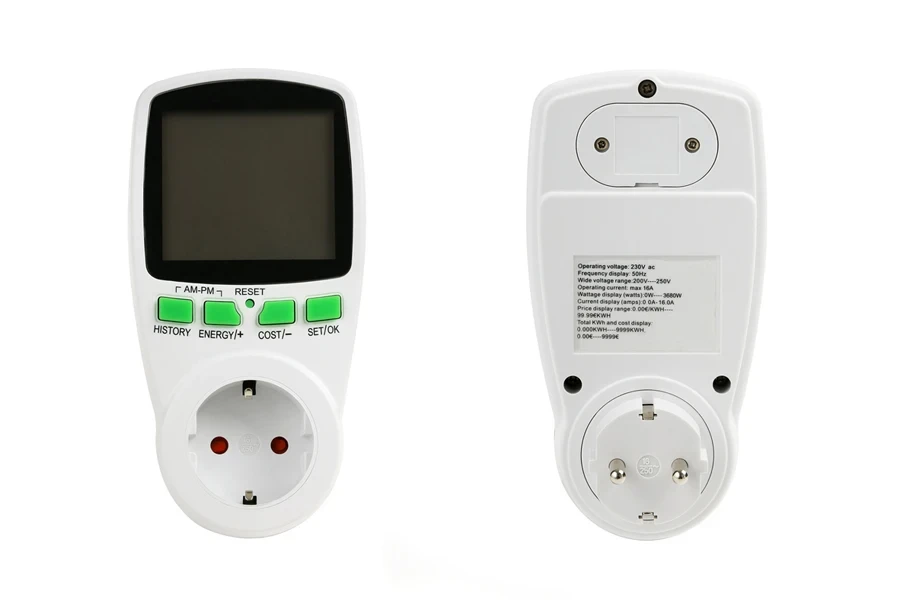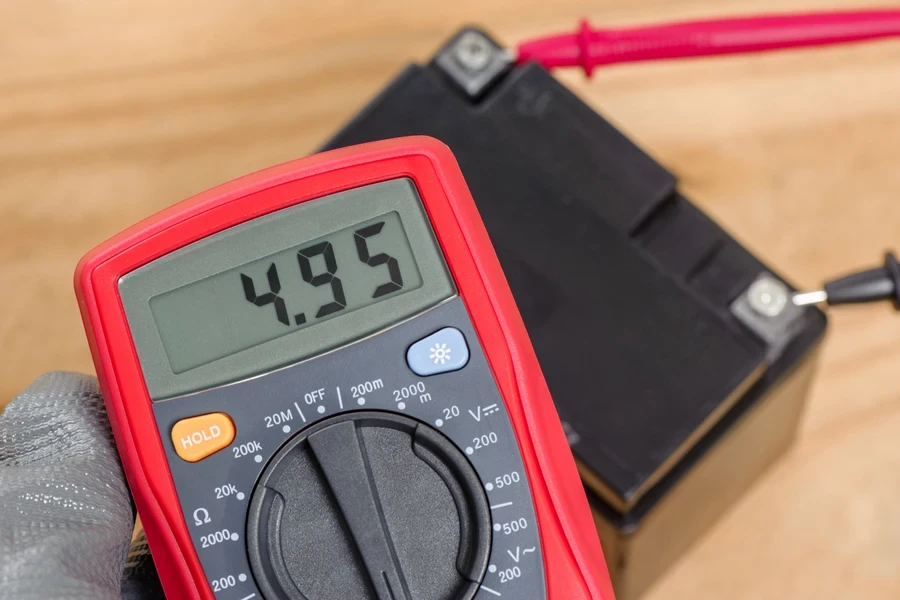We live in a sea of unseen signals, with electromagnetic fields (EMFs) buzzing from our phones, appliances, and even the power lines humming outside our windows. As awareness around these signals and how they can impact other devices keeps growing, professions increasingly need detectors to measure them.
This guide explores how EMF meters can be used in everyday settings – from home to the office – and their role in health and safety checks to help businesses and sellers better understand them.
Table of Contents
What is an EMF meter?
Applications of rechargeable EMF meters
Types of rechargeable EMF meters
Key features to consider in a rechargeable EMF meter
What is an EMF meter?

An EMF meter, in simple words, is a handy tool that sheds light (or, should we say, disrupts the waves?) on otherwise invisible electromagnetic fields. We no longer need bulky lab equipment to do so, as these rechargeable meters now make it easier than ever for anyone to take EMF measurements.
Whether you’re a curious homeowner, a tech-savvy professional, or someone concerned about workplace safety, there’s an EMF meter out there for every usage scenario.
Applications of rechargeable EMF meters

Home and personal use
Households wanting to determine how much electromagnetic energy is being dispersed by their gadgets – Wi-Fi routers, phones, and even the trusty microwave – can invest in an EMF meter to track down where these invisible waves are piling up.
Once they have found the hotspots, they may want to shuffle some furniture around, find a new home for that router, or even look into some shielding gear if they’re really worried about long-term exposure.
Professional use in engineering and research
When it comes to the pros, EMF meters are a whole different ball game. Engineers and researchers will be looking for super-sensitive gizmos that can pick up a huge range of frequencies and log significant amounts of data.
Engineers might use them to hunt down pesky electrical signals or ensure new tech doesn’t affect preexisting machinery.
Health and safety compliance
Many industries monitor EMF levels these days as outlined by regional and international guidelines. Governments limit how much EMF exposure is okay, and businesses that produce related tech must ensure they don’t cross that line.
This is especially crucial for telecom companies, hospitals, and factories, where the equipment they use can produce especially strong electromagnetic fields.
Types of rechargeable EMF meters

Single-axis vs. tri-axis meters
There are two main types of EMF meters: single-axis and tri-axis. Single-axis meters are more budget-friendly since they measure EMF in one direction at a time. Therefore, in the case where you might want to check a whole room for an EMF, you’ll need to point it exactly where you’re investigating.
Meanwhile, tri-axis meters measure in all directions at once, providing a reading for a single area. This convenience, unsurprisingly, comes with a higher price tag.
Consumer-grade vs. professional-grade
Consumer-grade meters are for regular day-to-day use. They’re reliable, easy to operate, and won’t break the bank. If you’re just curious about EMFs around the house or want to see where that weird buzzing sound is coming from, these will do the trick.
On the flip side, professional-grade meters are packed with all sorts of bells and whistles, including supersensitive sensors, the ability to detect a wider range of frequencies, and the ability to store tons of data. These are the go-to tools for engineers, researchers, and safety inspectors who need to know every little detail about EMFs in an area.
Key features to consider in a rechargeable EMF meter

Resolution
Resolution matters – a lot. It determines how much detail you can see in the thermal image. For basic home use, 80×60 pixels might suffice. But for professional applications, you’ll want at least 320×240, with many opting for 640×480 or even higher.
Higher resolutions allow you to see finer details and make more accurate measurements, especially from a distance.
Battery life and recharge time
When hunting for signals, the last thing you want is a meter that conks out while you’re measuring, and that’s why battery life is a big deal. A good meter should keep going and going, allowing you to work hassle-free out in the field or when running long tests.
Recharge time matters, too. Nobody wants to wait for ages while their meter charges up, so find a balance between a meter whose battery lasts but can charge quickly. Some of the more expensive models even let you swap batteries or plug into a power bank.
Thermal sensitivity and accuracy
Thermal sensitivity, often expressed as noise equivalent temperature difference (NETD), is another crucial spec for EMF meters. This defines the most minor temperature difference the camera can detect. For general use, a sensitivity of 0.1°C or better is fine.
Professional applications might require sensitivities of 0.05°C, or even lower. Remember, the lower the number, the more sensitive the camera.
Sensitivity is all about picking up those tiny EMFs, while accuracy ensures that what you’re picking up is the real deal.
Frequency range detection
EMFs come in all shapes and sizes, or rather, frequencies. Power lines emit low-frequency signals, while higher-frequency signals come from from the likes of phones and Wi-Fi.
A good EMF meter should be able to catch them all, though before making your purchase, think about what kind of EMFs specifically you’re looking to measure and make sure the meter can handle the job.
Display and user Interface
A good EMF meter should be a breeze to read, with a clear display and maybe even backlighting for when poking around in dark corners.
The controls should be easy to use, too. Some high-end models even let you save the readings or hook up to the computer – that’s handy if you’re wanting to analyze data or need to keep records.
Summary
EMF meters are like a pair of eyes for invisible waves, making them useful everywhere, from helping households check their homes’ EMF levels to providing engineers with precise data and keeping workplaces safe.
When shopping for the right meter for you, make sure to consider battery life and charging speed as well as sensitivity and accuracy. Check the frequency range, too, allowing you to measure everything from power line hum to cell phone chatter. Lastly, your device should be user-friendly, with a clear display and simple controls.
No matter what type of EMF meter you’re after, you’re bound to find it among the thousands of options from trusted suppliers on Alibaba.com.



